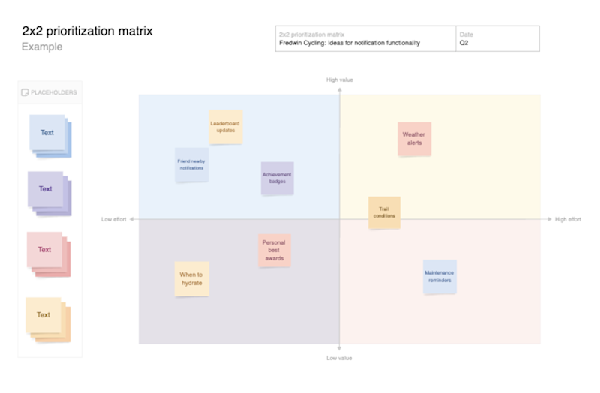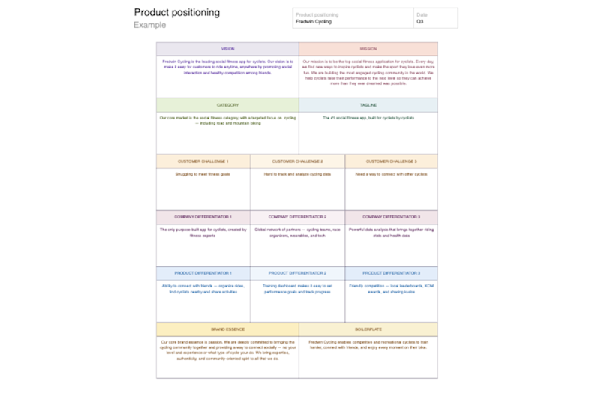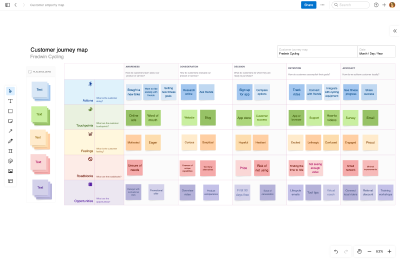How to create and define a product vision in 4 steps
Last updated: November 2024
You cannot build anything great without knowing why you are building it. Your product vision is the starting point. Vision helps you create a forward-looking, customer-driven product strategy that keeps the future in focus and inspires the team to do their best work every day.
There is no shortcut to crafting your product's vision (AI is not going to do the critical thinking for you), but there are set steps you can follow. Use this guide to gain a solid understanding of what product vision is (and what it is not), along with tangible advice on how to draft a strong product vision statement.
Skip ahead using these links:
What is product vision?
Product vision defines the overarching purpose of a product, outlining what it aims to achieve for users and how it supports their needs. It captures where the product is headed and why it matters. A strong product vision aligns your product roadmap with business goals, guiding decision-making and ensuring the team stays focused on long-term success.
Let's look at a few examples for fictitious software companies called HealthTrack, LearnFlow, and FinanceWise. These example vision statements communicate each of their product's purpose and direction at a glance:
HealthTrack: We empower users to improve their well-being through personalized, data-driven health tracking.
LearnFlow: We make learning joyful so students can unlock their full potential.
FinanceWise: We make managing money simple so everyone can take control of their financial futures.
Vision might seem abstract at first, but it becomes the anchor that helps clarify your priorities. When everyone on the team can connect their work to a larger meaning, it drives alignment and fosters a deeper sense of commitment.
A strong vision also benefits your customers. When you are clear on what you are offering and why, you can deliver experiences that truly meet their needs.
Use strategic models in Aha! Roadmaps to build your vision statement. Start a free trial.
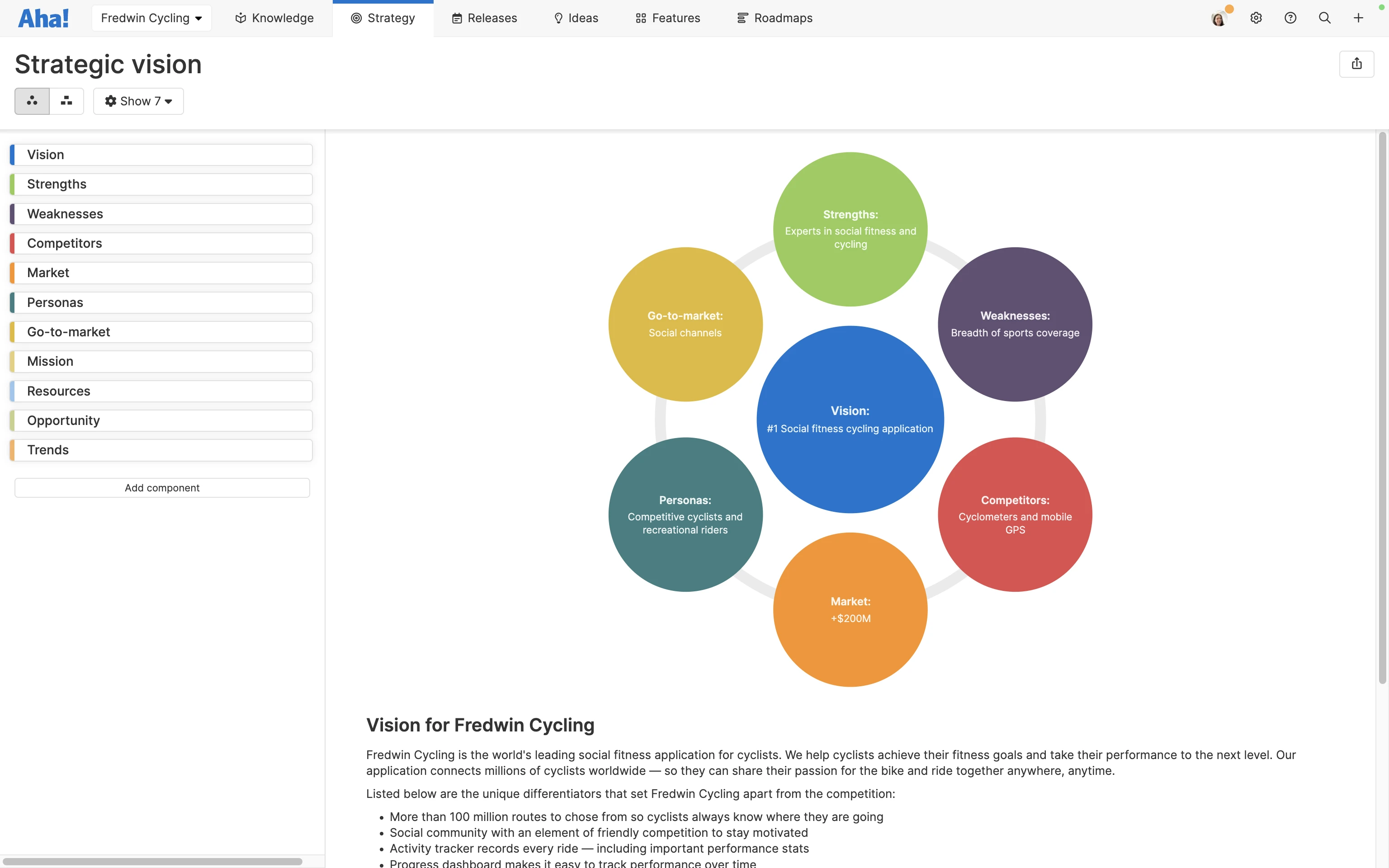
Additional components in this strategic model include competitors, market size, personas, and more.
What product vision is not
Terms like vision, objectives, and roadmap are often mixed up in product management, but getting them right is important. Each serves a different purpose for guiding the team.
A product vision is not the same as a:
Product roadmap: A roadmap is a visual plan outlining the specific features, releases, and timelines needed to deliver on the vision.
Set of product goals: Goals provide measurable outcomes that contribute to the vision but are not the vision itself.
Short-term objective: Vision is focused on the long-term impact, not immediate deliverables.
Marketing slogan: While a vision should inspire, it is not a tagline or brand message — it is a guiding force for the team’s work.
People also often confuse vision with mission and strategy. While the vision defines what you ultimately aspire to achieve, the mission and strategy provide the means to get there. Here’s a breakdown of each term:
Product vision: Defines the purpose and future direction of a product. (In contrast, a company vision describes the entire organization's broader aspiration and impact it aims to create in the world, guiding all products and initiatives under this umbrella. In some cases, product vision and company vision are the same.) Our vision at Aha! is a world of lovable software built by happy teams.
Mission: Defines what you will build or do to achieve your vision, translating it into practical terms that guide strategy and set success criteria
Strategy: The operational plan that includes measurable goals, high-level initiatives, and other work items essential for achieving your vision and mission
Related:
What makes a product vision exceptional?
You know an exceptional product vision statement when you see one. It sparks excitement and a sense of purpose. It inspires people to push boundaries.
While your vision will be unique to your product and organization, there are some common threads that the strongest vision statements share.
They are often:
Intentional: Guiding the team toward meaningful contributions that shape the future
Inspiring: Energizing the team to push limits
Realistic: Setting an ambitious yet achievable target
Customer-centered: Oriented around customer needs
Clear: Simple and easy to communicate
Accessible: Embedded in daily work, consistently reinforced and shared
Your vision should feel bold and direct — written in plain language. Everyone in the company (or product team if the organization has a broad product portfolio) needs to know and understand it deeply. No matter their role, each person should be able to connect their work back to the vision (and product strategy). This is one of the best ways to bring greater impact to daily tasks.
How do product managers contribute to the product vision?
If you are here because you have the chance to write or contribute to a product vision statement, congrats — that is a big deal! Not every product manager gets that opportunity. Often, you will step into a company where the vision is already set, but that does not mean your role is any less important. Whether you are shaping the vision or helping to refine an existing one, your input matters.
Even if you are not defining the product vision from scratch, as a product manager, you play a critical role in bringing it to life. Your close collaboration with stakeholders and deep understanding of customer needs make you an essential part of guiding its direction. While executives may chart the broad destination, you help refine and pressure-test it, ensuring it resonates with your team and aligns with what customers truly want.
Related:
How to write a product vision statement in 4 steps
Establishing a product vision — or revitalizing an outdated one — is a collaborative effort. Start by gaining support from your manager and product team. Connect with other teammates, team leaders, and even current and prospective customers for broader insights. The steps below will help you begin.
As you progress, use our product vision template to easily capture and share your vision for the future of your product.
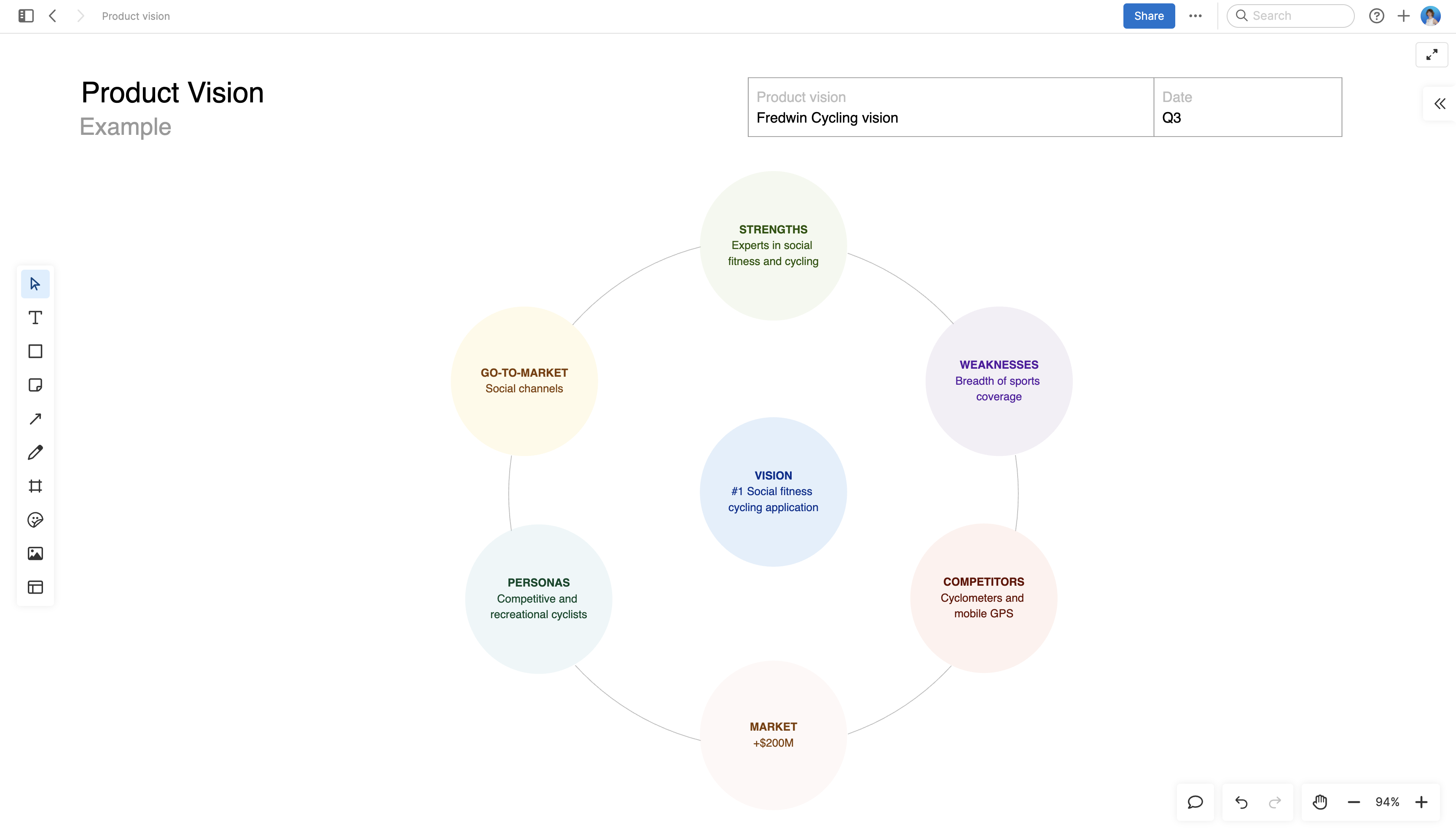
1. Listen
A strong vision starts with understanding your customers and their needs. Begin by researching the market and audience to identify key challenges. For a new product, clarify target customers and their pain points. For an existing product, gather direct feedback from customers and teams like support and sales to deepen your understanding.
As you gather insights, consider these questions:
Why does our product exist, and what core problem does it solve?
What makes our product distinctly valuable or unique?
How do we want customers to experience our product and brand?
What do customers and internal teams see as the biggest pain points?
Where are competitors innovating, and what opportunities do we see in the market?
What long-term goals (e.g., lasting a year or more) should shape our roadmap?
What challenges and risks might impact our vision?
What are our growth and revenue goals, and how does the product vision align?
Related:
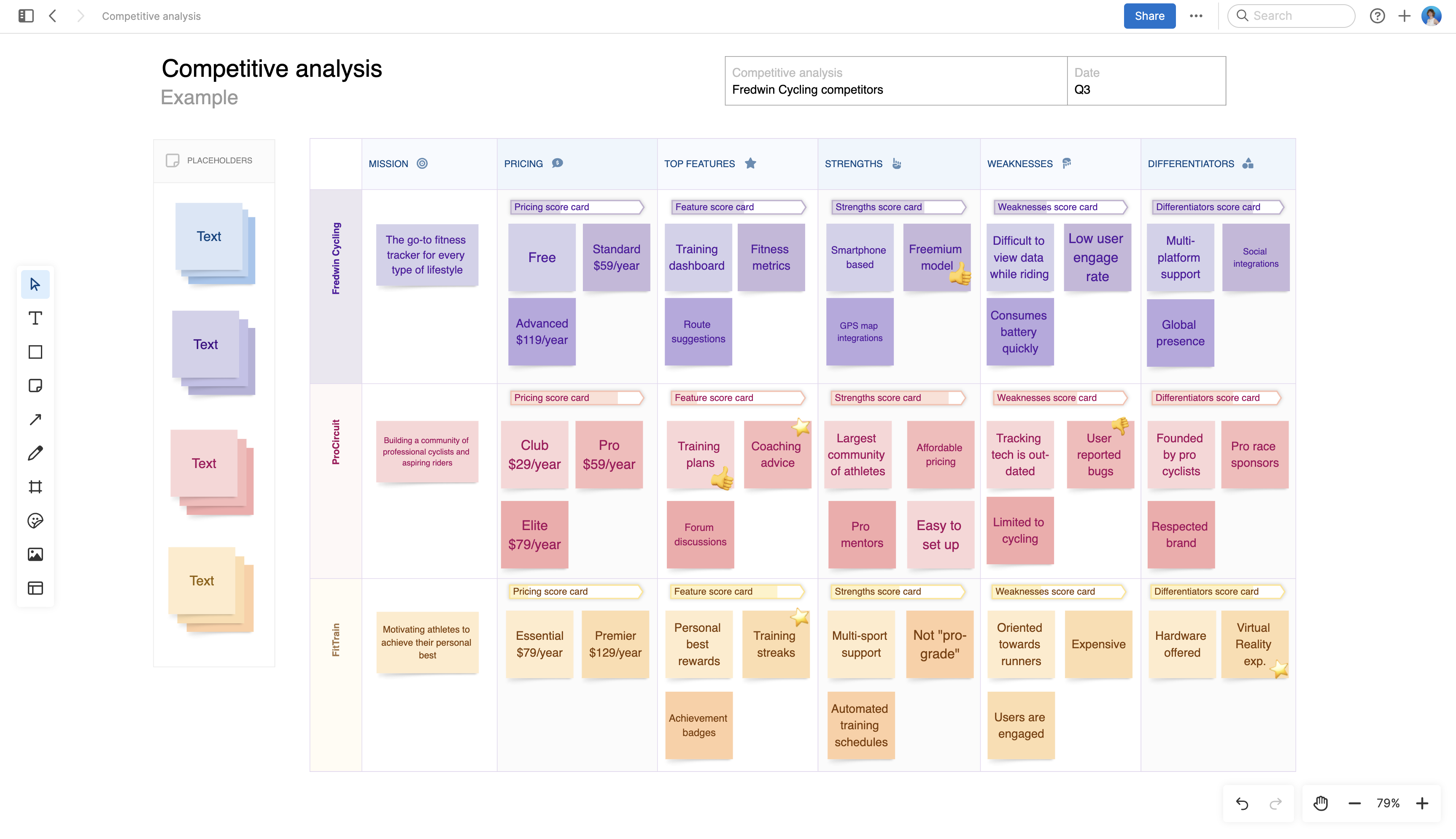
Use this competitive analysis template to understand the broader market.
2. Distill
Synthesize your insights into a sentence or two that captures your product's core value. Keep it simple and memorable so you can easily share it with others.
Here is a model for a vision statement to get started:
The [target buyer/user] who [has this problem] will use [name of your product] to achieve [the key benefit or value you will provide] because [explanation of why other offerings fail] and will feel [the following emotion].
You can also use a product positioning statement to capture this information:
For [group of users] that [need/want], [company/product] is a [category/solution] that uniquely solves this by [benefit].
Here are some examples of real-world vision statements:
Google: Provide access to the world's information in one click.
LinkedIn: Create economic opportunity for every member of the global workforce.
Spotify: Unlock the potential of human creativity by giving a million creative artists the opportunity to live off their art and billions of fans the opportunity to enjoy and be inspired by it.
Related:
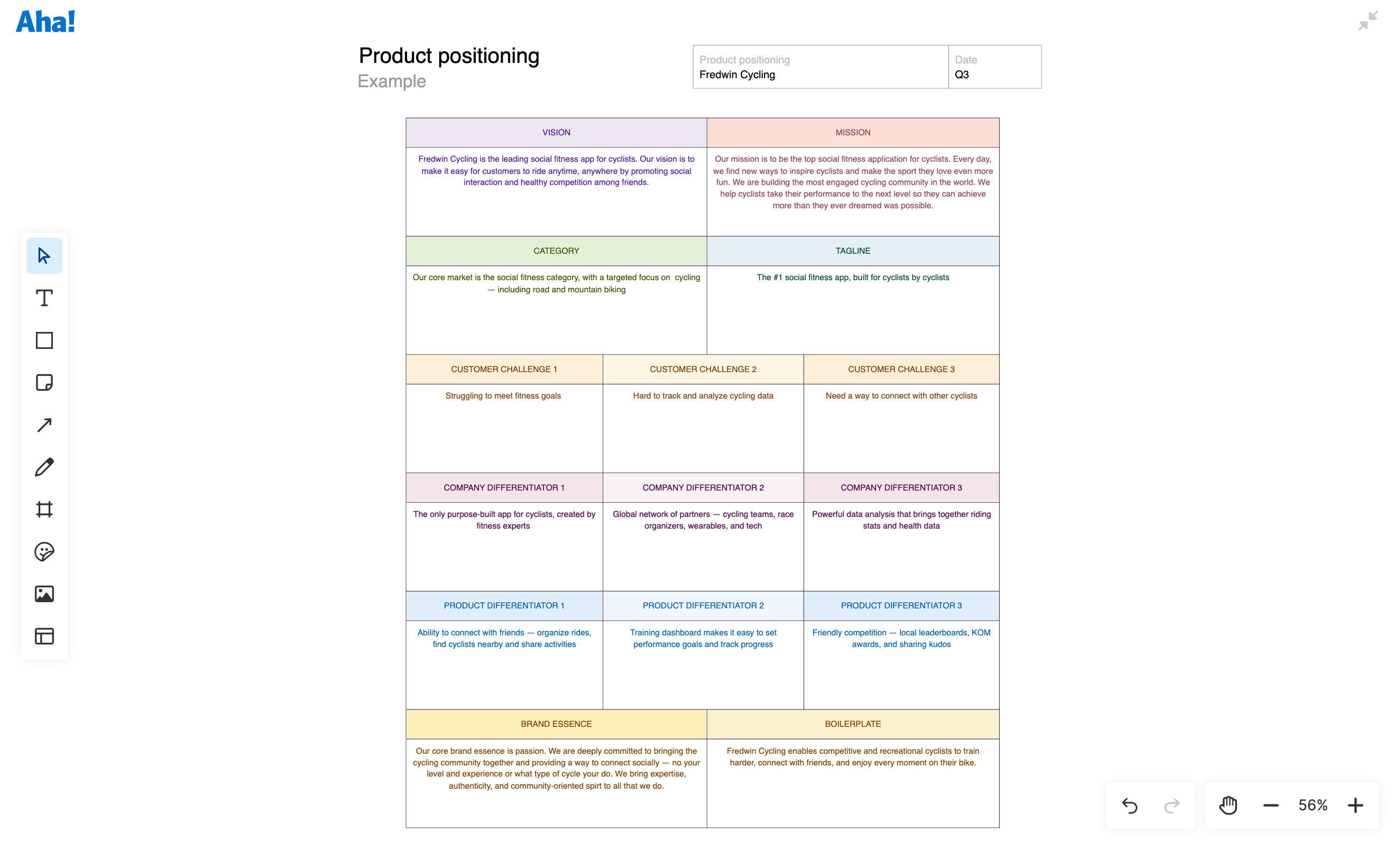
Use this positioning template to articulate the key benefits of your product.
3. Unify
As you refine your vision, seek feedback across the organization, from executives to customer-facing teams. Does it resonate? Is it aligned with company goals? A vision that is inspiring and clear helps all teams see how their work supports the bigger picture.
Related:
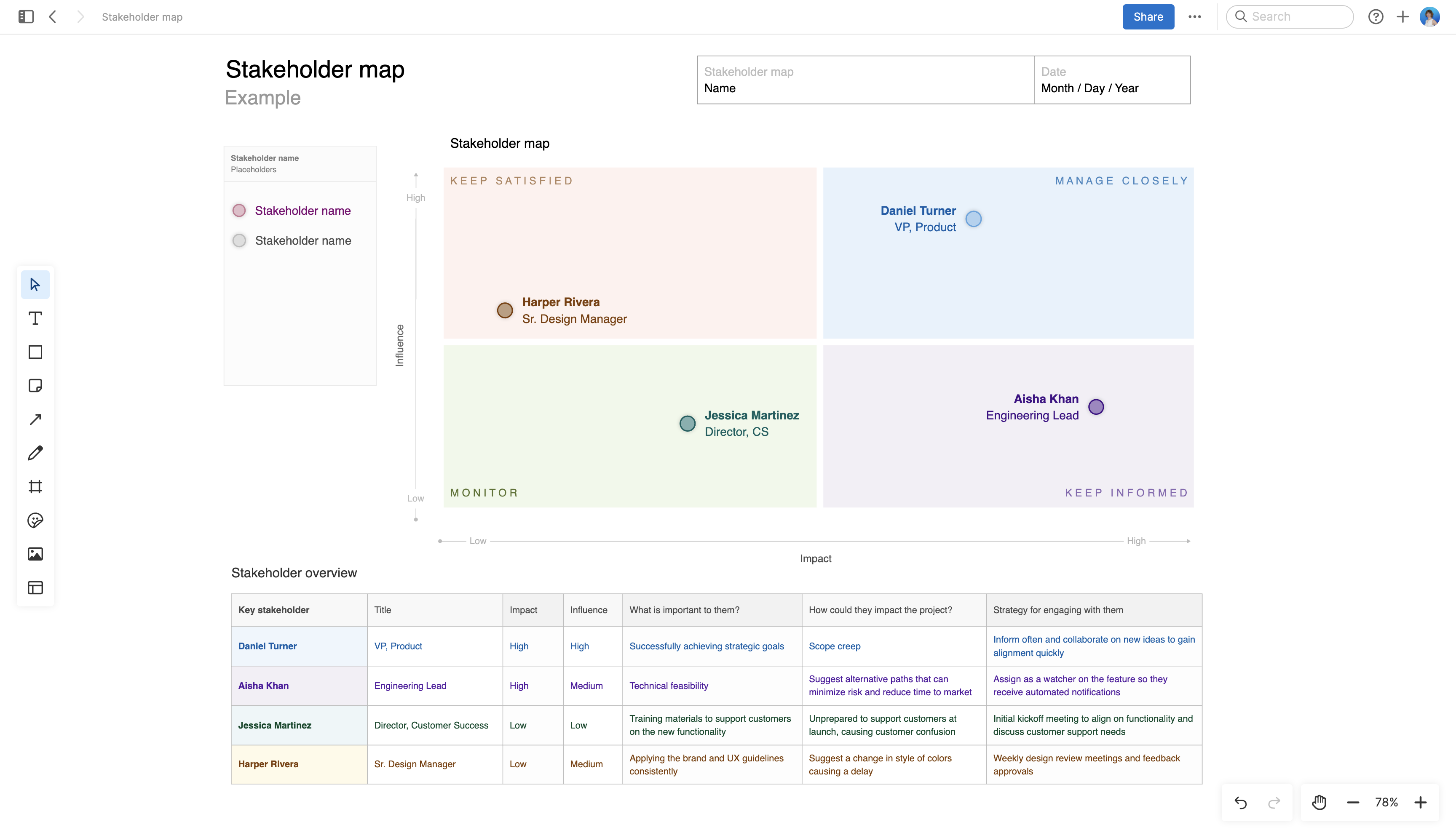
A stakeholder map can help you identify who to involve in product decisions and when.
4. Document
Once finalized, document your vision and make it accessible to the team. Use a tool like Aha! Knowledge as a central hub to house your vision, strategy, and supporting documentation. Plan to revisit the vision annually or after significant changes to keep it relevant and motivating.
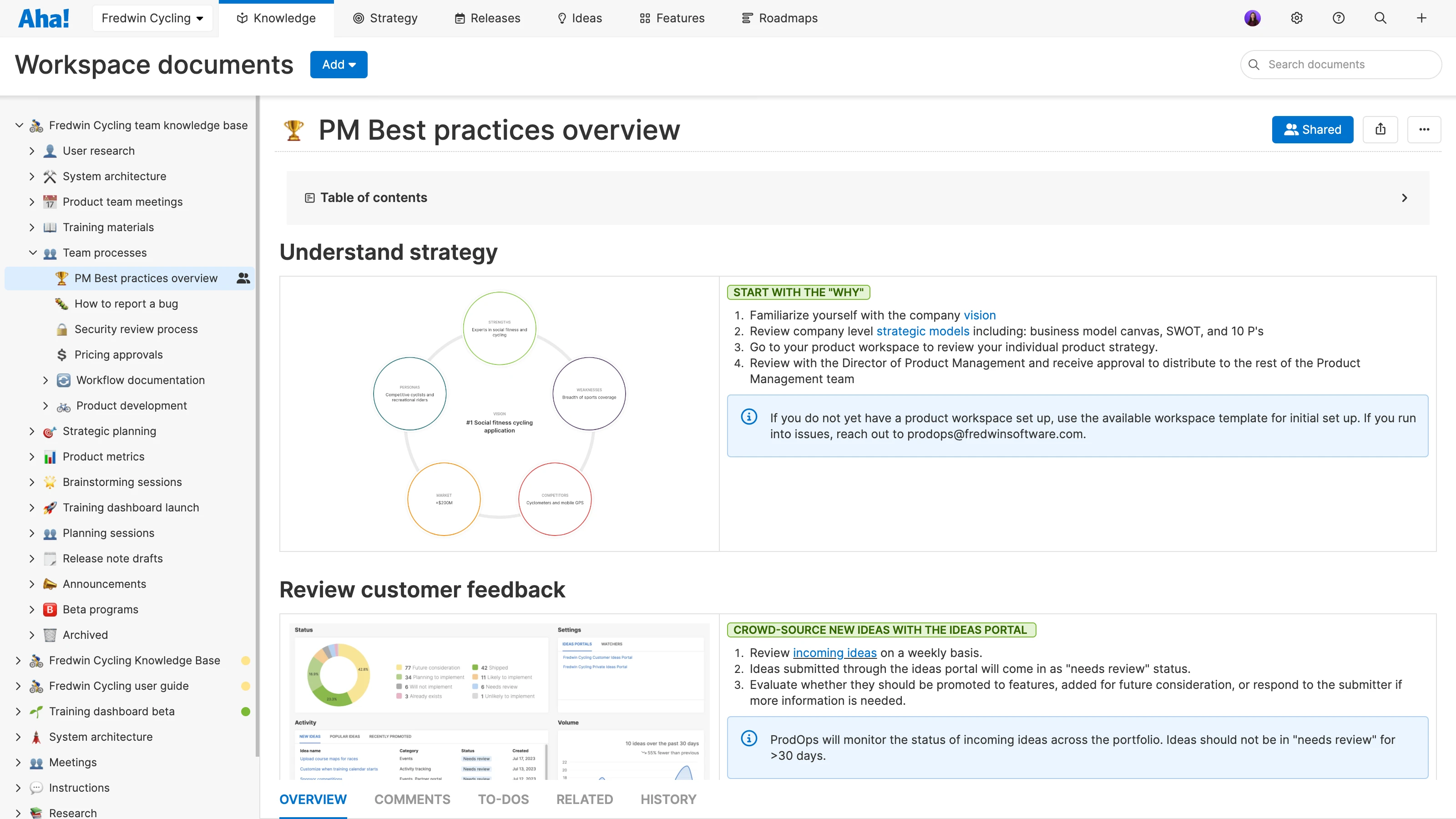
Create and share all of your product documents from a single hub so everyone can quickly access the resources they need.
Related:
Following these steps will help you establish a vision that serves as a foundation for everything ahead. A clear, enduring vision statement will guide your strategy, support your roadmap, and remind you why you began building this product. With a product management software suite like Aha! software, you can keep vision front and center — aligning strategy, prioritizing work, and monitoring progress over time.
Frequently asked questions
How do you create a compelling product vision?
Start by understanding your customers’ needs and the unique value your product provides. Collaborate with stakeholders to define an inspiring yet achievable direction that aligns with your company’s overall strategy. Keep your vision concise, clear, and accessible to everyone across the team.
What is the difference between a product vision, product strategy, and roadmap?
Product vision is your view of the future. Strategy explains the approach you will take to realize that future state. And a roadmap visualizes the more tactical plan for what you will do to get there (and when you will arrive), informed by the vision and strategy.
What tools can help document and share a product vision?
The Aha! suite offers a comprehensive set of tools to document, refine, and share a product vision. Start by brainstorming and gathering feedback in a collaborative space using Aha! Whiteboards. Once finalized, document your vision in a structured accessible format with Aha! Knowledge. And keep your vision connected to the broader strategy and all your detailed work using Aha! Roadmaps.
What are some exercises for brainstorming product vision?
There are lots of exercises out there to help you clarify and define your product vision. For example, a brainstorming session template in Aha! Whiteboards can guide your team through structured activities that encourage creativity and alignment. Use the ready-made framework to explore ideas, organize your thoughts, and prioritize key concepts that should shape your vision.
What are some common mistakes in defining a product vision?
Being too vague, overly ambitious, or disconnected from customer needs can derail a product vision. A vision should be clear and actionable — providing direction that inspires and aligns the team without overpromising. Avoid focusing on features or short-term goals. Instead, aim for a vision that communicates the problem you are solving, who you are solving it for, and the value you want to deliver over time.
How can a product vision inspire innovation with the team?
A clear product vision can be a powerful source of inspiration. When well-defined, a vision not only shows where the product is headed, but also gives the team purpose and room to explore creative solutions. When it resonates, people feel motivated to dream up new ideas and pursue innovation that aligns with your long-term direction.
